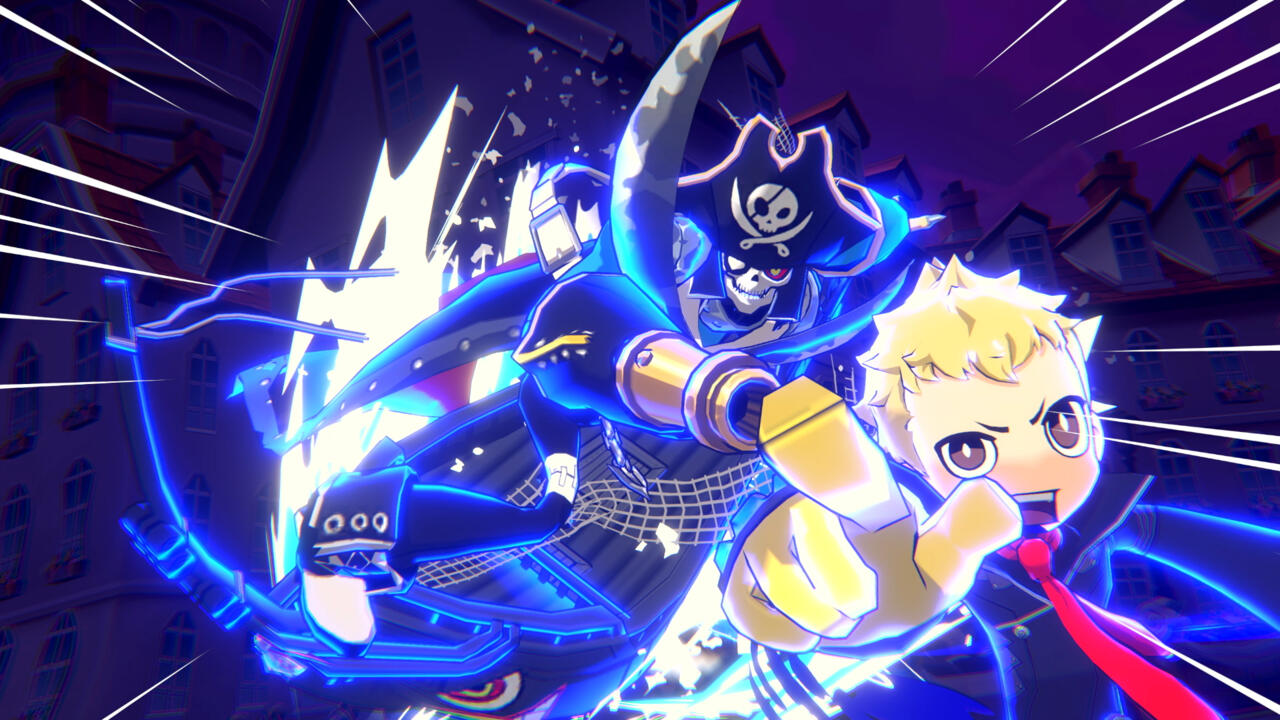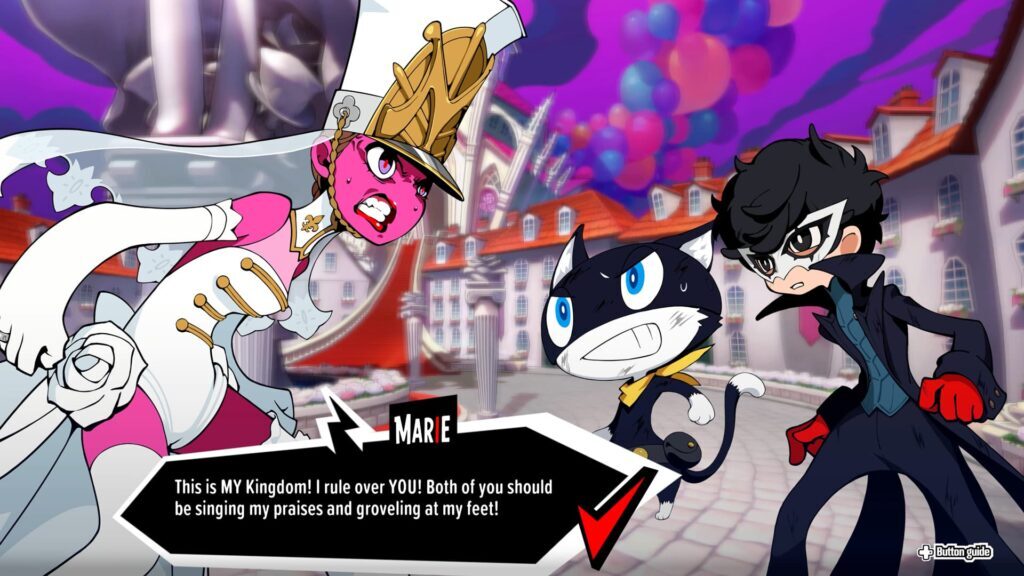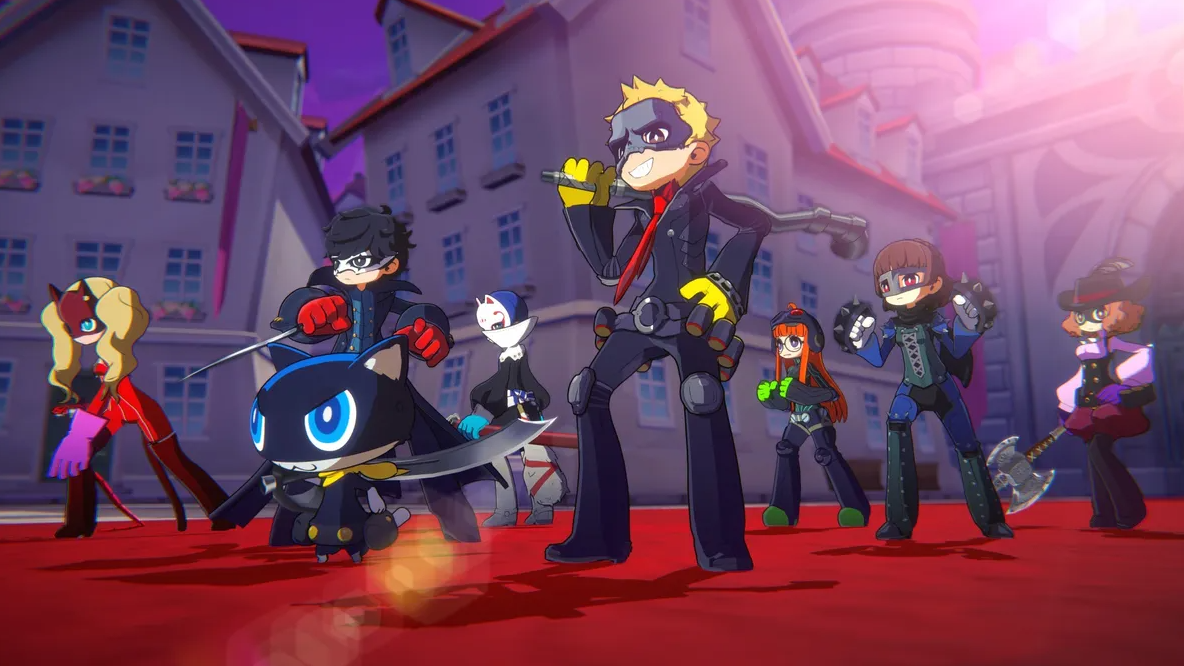Over the years, Atlus–the studio behind the Persona series, Catherine, and Shin Megami Tensei–has developed a reputation for the way it approaches adult themes and dark topics unabashedly. While this generally makes for an M rating and the mild discomfort that accompanies the clumsy handling of delicate situations, it also makes complete sense. Many of the studio’s titles explore humanity and the human condition, both of which contain their fair share of darkness and messy situations. They’re ambitious topics to explore, and for that, I’ve always had tremendous admiration for Atlus and its Persona series in particular. But even more important than simply starting the conversation is the way the studio frames it–how it juxtaposes the darkness against powerful messages about courage, morality, hope, and idealism to make everything more meaningful. These things combined are what make Persona so beautiful–what shapes its identity.
Persona 5 Tactica not only exemplifies that identity but revels in it. With its chibi-style art, along with situations and dialogue that, at times, feel straight out of the requisite beach episode of an anime, the game offers more levity than Persona 5 Royal. Yet at its core, it remains focused on delivering powerful messages, tackling complex themes, and encouraging those who play it to not only be more sure of themselves but aspire to be more idealistic and kind as well. Tactica does all this spectacularly, using a powerful story and two new characters you can’t help but fall in love with. Together, these narrative elements draw players into the next chapter in the Phantom Thieves saga and reignite the flames of rebellion. Though I went into the game not sure if its genre shift or even the game’s existence would feel truly warranted–not sure if we needed yet another 30+ hours of Joker and friends–I walked away from the game thankful for it and the comfort it gave me.

Set shortly after the events of Persona 5 Royal, Persona 5 Tactica follows the Phantom Thieves as they embark on a new adventure through familiar yet uncharted territory. The journey begins at Le Blanc’s, where Joker is serving up coffee and curry to his soon-to-be-graduated friends while the group discusses their plans for the future. However, conversations come to a halt after the Thieves notice time is now standing still and the Metaverse–the cognition-constructed realm our heroes thoroughly explored in the P5–has seemingly consumed them once again. As quickly as they are pulled back into the cognitive world, however, our heroes note that something is different about the Metaverse this time. Uncovering what that difference is (and how to get back home) then becomes the group’s first priority and sets everything in motion, albeit a bit slowly.
That slow start–as well as the game’s sloggy final hours–are Tactica’s biggest flaws. At times, it feels like the game is drawn out merely for the sake of tacking on hours when an expedited beginning and sticking to the game’s natural finale would have greatly benefited the experience. Thankfully, however, everything between these two points is excellent.
The Metaverse of Tactica takes shape as a series of kingdoms ruled by tyrannical leaders with a common connection. A lot of the game’s major themes, as well as its two new characters, Erina and Toshiro, are introduced early in Act One and the entirety of the next 25 hours is perhaps the most heartfelt and compelling Persona story arc I’ve ever experienced, managing to use its overall narrative and the interpersonal dynamics of characters to forge an intense investment in what unexpected situations lie ahead from the player. In many ways, Tactica is a blend of Persona 5 and Persona 3, as it deftly weaves an intense and emotional personal story into a larger one about what it means to grow older and become complicit in the subjugation of both others and yourself. Though it might sound strange, I felt extremely fortunate to play Tactica when I did. It was comforting to be surrounded by its relentless idealism, given the state of the world in 2023.

On top of introducing two fantastic characters, Tactica also makes the series’ existing cast of characters even more endearing. While I didn’t feel especially close to Haru in Persona 5, for example, Tactica’s visual novel style gave her (and every character, really) more of a chance to converse with others and showcase her personality. It also features side quests and side conversations that are often more lighthearted and allow certain sects of characters to interact with one another–or even give Joker the chance to envision what marrying each of his party members would look like, without any added homophobia. I was particularly fond of how the older cast of party members spoke to Erina and Toshiro, and how the traumatic experiences they went through in the previous games shaped their worldviews. The Phantom Thieves have been on quite a few adventures now and the impact of them is evident in how they are more empathetic and more assured of their life’s mission.
The windows Tactica offers into its characters–as well as its rest system, which strengthens characters who sat out of combat–made me more eager to try out different party members and strategies on the grid-based battlefield. This was heavily rewarded, as combat in Tactica feels highly customizable and oftentimes more engaging than Persona’s traditional turn-based combat. By cleverly positioning your party for Triple Attacks, landing critical hits to obtain a One More Time action, and placing teammates in the right places for opportunity attacks, you can make one turn pack all the oomph of several and completely change the tide of a battle. It very effectively mimics the flow and feeling of exploiting a weakness and delivering an all-out team rush attack in the recent Persona games. Additionally, each character features a fairly sizable skill tree (that you can respec at any time) that gives them unique abilities and contributions to battles, as well as a set of inherent skills. Haru, for example, has greatly reduced movement speed but packs a huge punch with the right weapon. Ann, on the other hand, can traverse the battlefield with speed but focuses more on magic than physical attacks.


Another fantastic change is that the bulk of the action no longer resides with Joker. Now, every character can dual-wield Personas. One of these will always be their signature persona, such as Skull’s Captain Kidd or Mona’s Zoro, but the other is entirely your decision. This change makes every character feel more viable and exciting to use. By giving my characters with high SP a persona with devastating heavy magic attacks and reserving those with skill-based abilities for more melee-based characters, my team felt highly optimized and adept. These systems and Tactica’s battles, which range in challenge levels, encouraged me to make every fight mentally stimulating for myself. I was always eager to try out new party formations and persona combinations and tried my hardest to end each battle in a way that met all its optional victory conditions in addition to its mandated one.
I was continually shocked by Tactica’s robustness across its story, systems, and battle mechanics. Even the options presented to you in the Velvet Room were expansive, with all the countless Personas featured in P5 returning to be summoned once more in Tactica, along with the ability to fuse them. There is no part of the game that feels resigned to being a mere spin-off. Had you no expectation of what a full-sized Persona game entails, you could easily mistake Tactica for being the main attraction. Ambition might be the game’s only real hindrance, as its final hours feel very tacked on, especially considering there is a point that feels like an extremely natural resolution to the game. The other major bump against Tactica is its performance, which was sometimes an issue on my Nintendo Switch OLED, particularly the occasional framerate dips and noticeable load times.


Yet that’s not to say the game’s visuals are lacking. I was also surprised by just how much I loved the game’s art style, which, while similar in its boldness and color palette, deviates significantly from the original game’s sleek and mature anime aesthetic. Instead, Tactica adapts something a bit more chibi-like, complete with small, rounded characters, wide eyes, and cartoony expressions. Yet even during the game’s more intense and tragic cutscenes, this art style works well. It adds a vibrancy, energy, and playfulness that I adore, and, alongside the combat shifts, contributes to giving Tactica its own identity separate from what’s come before.
Ultimately, Persona 5’s transition to tactics-based combat is a triumph. Every aspect of Tactica is so well conceived and moving that what’s created is something truly exceptional, especially in regard to its story. I grew to adore the Phantom Thieves even more and fell in love with Toshiro, Erina, their story, and everything their characters stood for. Despite being a spin-off, Tactica has a beautiful message delivered with a clear voice. It’s a fantastic addition to the Persona 5 universe–one that celebrates its spirit and resolve while also taking the conversations and ideals explored in the game to new heights.

